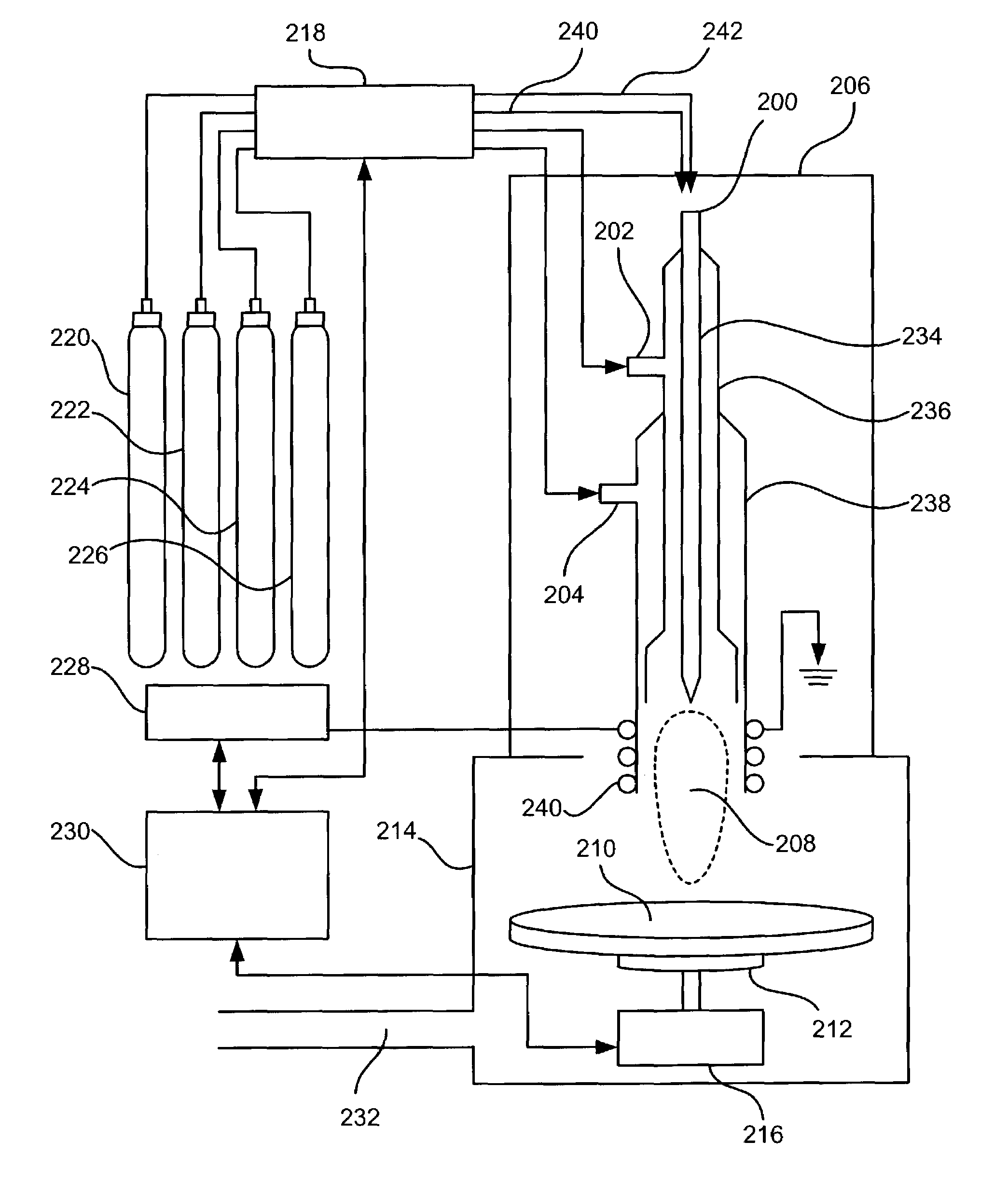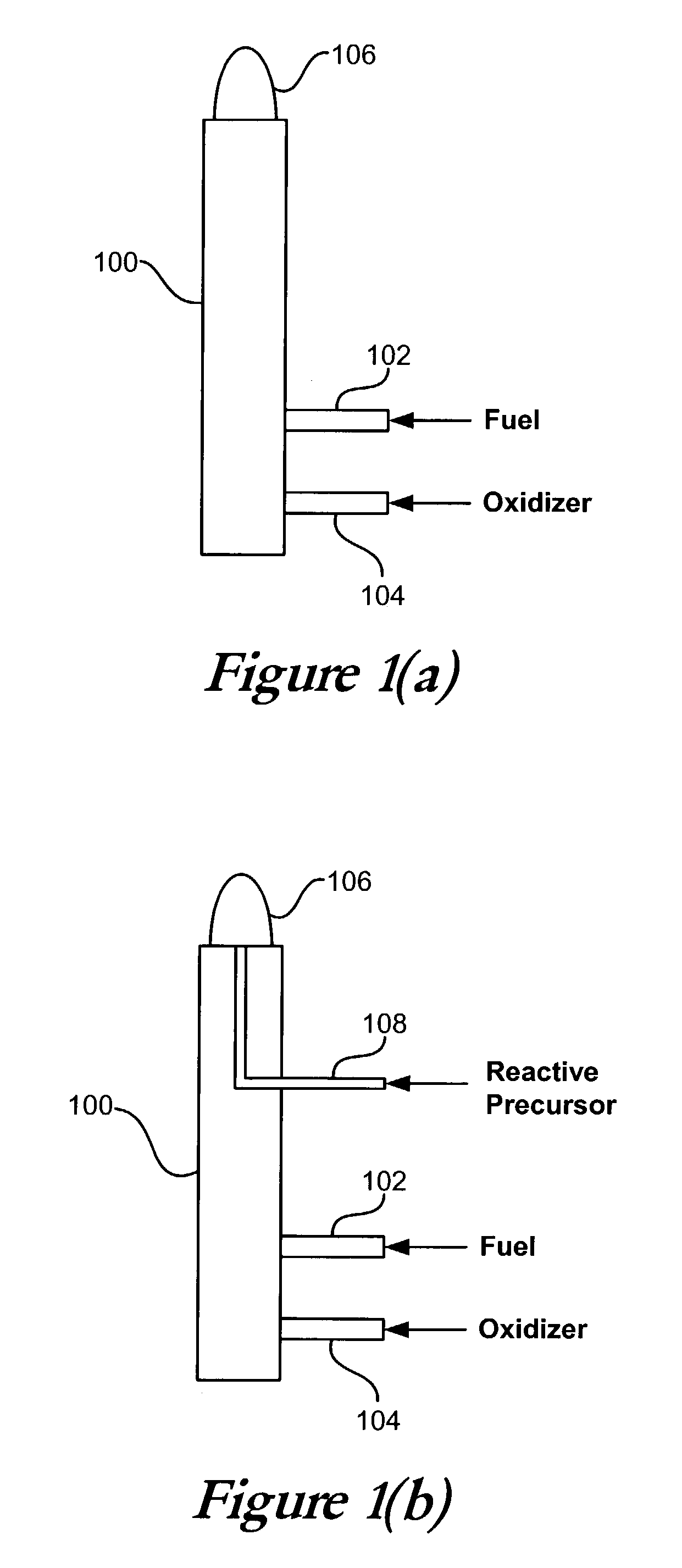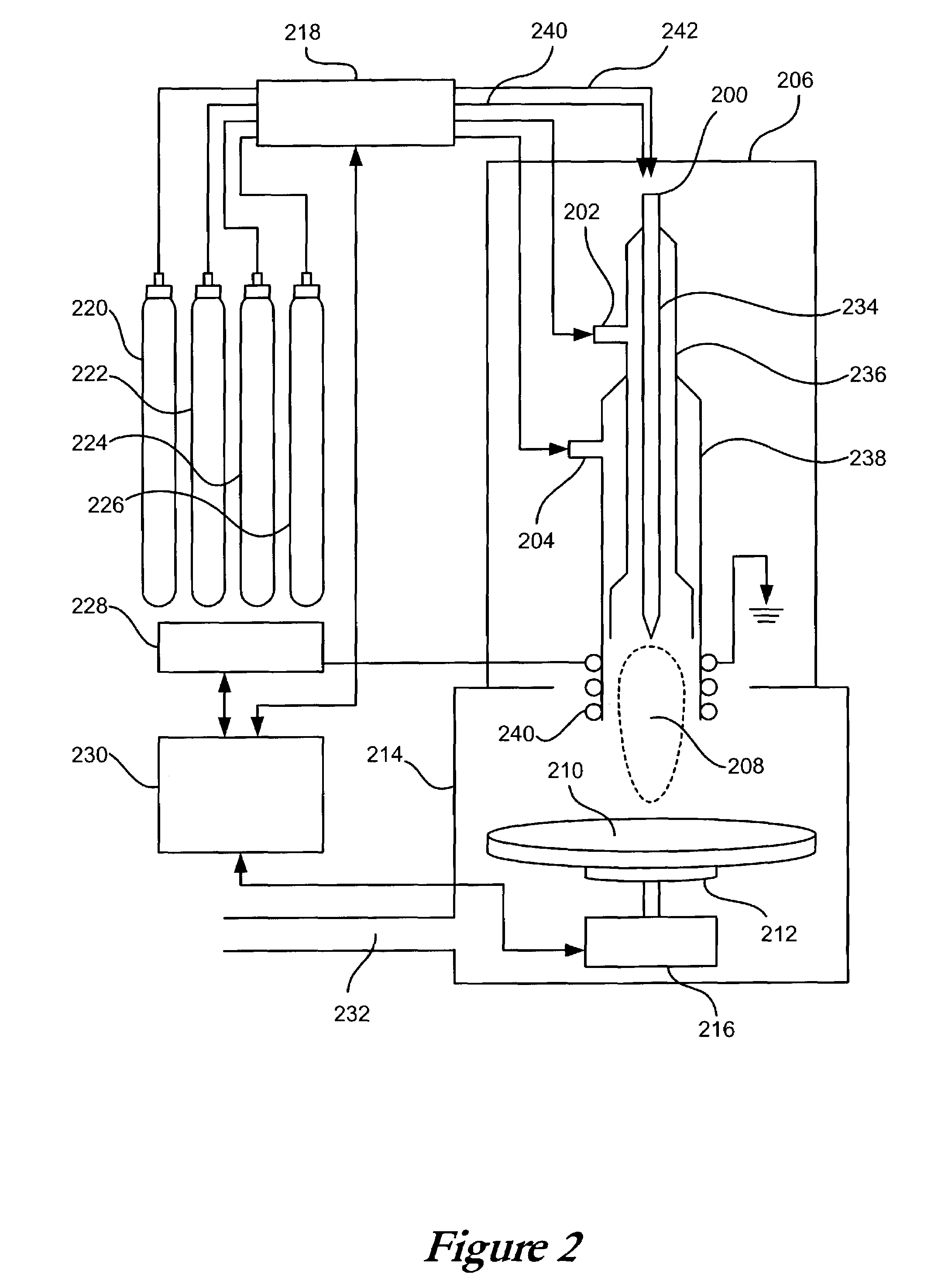Method for non-contact cleaning of a surface
a non-contact surface and cleaning technology, applied in the field of cleaning surfaces, can solve the problems of surface and possibly subsurface damage, difficult to control the cleaning process, and the complexity of the icp device, etc., and achieve the effects of improving the process, high controllability, and rapid shaping of hard-to-machine materials
- Summary
- Abstract
- Description
- Claims
- Application Information
AI Technical Summary
Benefits of technology
Problems solved by technology
Method used
Image
Examples
Embodiment Construction
[0013]When developing systems useful for reactive atom plasma (RAP) processing, it was determined that certain parts needed to be cleaned before being processed. As used herein, “cleaning” refers to the selective removal of contaminants from a surface. A contaminant on the surface of a workpiece during an etch or surface modification process can act as a mask, causing the material below the contaminant to remain unaffected. This masking phenomenon can result in the formation of a plateau with the contaminant at the top. Alternately, the contaminant can act as a catalyst, causing the contaminant particles to burrow into the surface, with each particle potentially creating a pit in the surface. Either result is highly undesirable.
[0014]Initially, all the parts to be processed were cleaned manually in a class 100 clean room using wipes and solvents. While reasonably successful, the approach left behind a small number of particles, and, more problematically, a thin layer of organic mate...
PUM
| Property | Measurement | Unit |
|---|---|---|
| inner diameter | aaaaa | aaaaa |
| temperature | aaaaa | aaaaa |
| mass flow | aaaaa | aaaaa |
Abstract
Description
Claims
Application Information
 Login to View More
Login to View More - R&D
- Intellectual Property
- Life Sciences
- Materials
- Tech Scout
- Unparalleled Data Quality
- Higher Quality Content
- 60% Fewer Hallucinations
Browse by: Latest US Patents, China's latest patents, Technical Efficacy Thesaurus, Application Domain, Technology Topic, Popular Technical Reports.
© 2025 PatSnap. All rights reserved.Legal|Privacy policy|Modern Slavery Act Transparency Statement|Sitemap|About US| Contact US: help@patsnap.com



